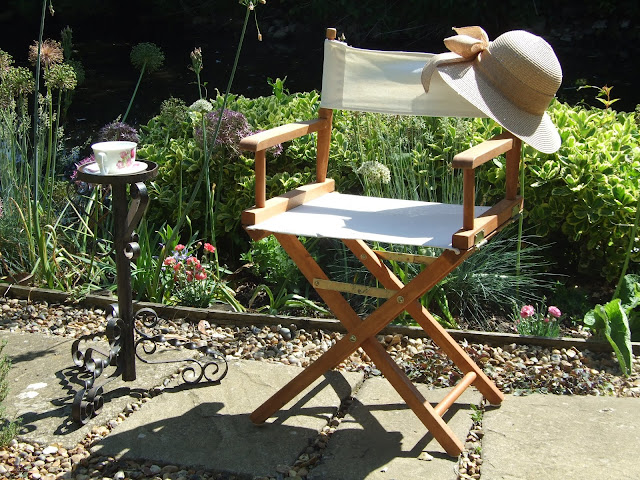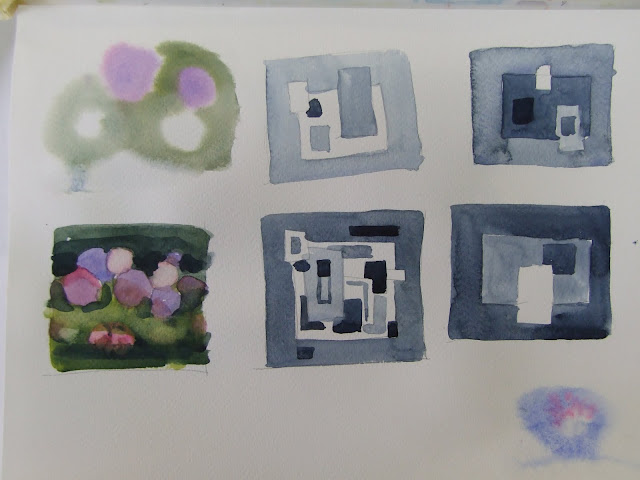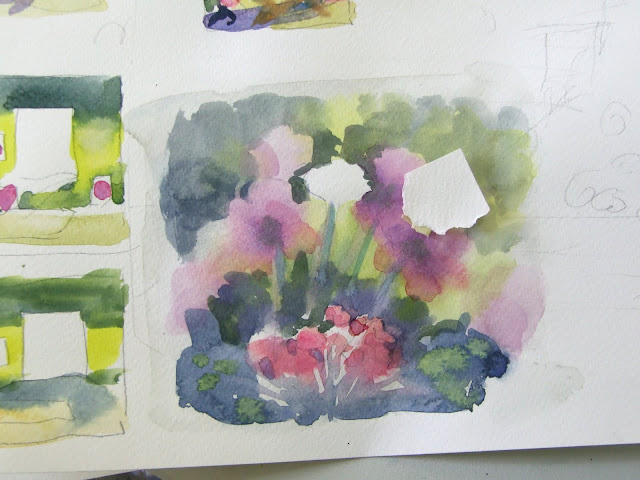We began by practicing random shapes, and pulling the pigment out with a splayed out brush before the was had a chance to dry to a hard edge.
One of the challenges with this exercise was to avoid brush marks which weren't describing anything, the way to do this is to practice fi

To get a more even streak free application, try not making repeated brush strokes she you are lifting your brush off the paper at the end of every stroke, this results in blobs where you have lifted off, and doesn't help each brushstroke to merge into the other, try to keep your brush on the paper at all times during a colour application, holding your brush at a shallow angle and sideways on to get the widest possible marks, practice this as an exercise on it's own till it becomes second nature to you.

 |
| This is the photo reference we were using |








































 Then we copied some and invented others in tone then applied that understanding to abstracting a composition of the flowers in the garden, first wet on dry, then wet in wet
Then we copied some and invented others in tone then applied that understanding to abstracting a composition of the flowers in the garden, first wet on dry, then wet in wet








